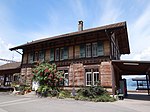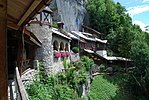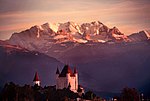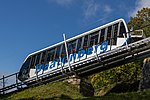The Bernese Oberland (English: Bernese Highlands, German: Berner Oberland; Alemannic German: Bärner Oberland; French: Oberland bernois), the highest and southernmost part of the canton of Bern, is one of the canton's five administrative regions (in which context it is referred to as Oberland without further specification). It constitutes the Alpine region of the canton and the northern side of the Bernese Alps, including many of its highest peaks, among which the Finsteraarhorn (4,274 m (14,022 ft)), the highest in both range and canton.
The region essentially coincides with the upper basin of the Aare, the latter notably including Lake Thun and Lake Brienz, the two large lakes of the region. On the banks of the lakes or the Aare are the main settlements of Thun, Spiez, Interlaken, Brienz and Meiringen. The numerous side valleys of the Bernese Oberland include a large number of Alpine villages, many of them being tourist resorts and connected by mountain railways to Spiez and Interlaken. The Lötschberg, a major north-south axis through the Alps, links the region with both the capital of the canton, Bern, and its sizable southern neighbour, the canton of Valais.
The flag of the Bernese Oberland consists of a black eagle in a gold field (in reference to the region's old status as reichsfrei) over two fields in the cantonal colours of red and black.
The Swiss German dialects spoken in the Bernese Oberland are Highest Alemannic German, contrasting with the High Alemannic Bernese German spoken in Bern and the northern parts of the canton.
In the short-lived Helvetic Republic (1798–1803), the Bernese Oberland was a separate canton.










